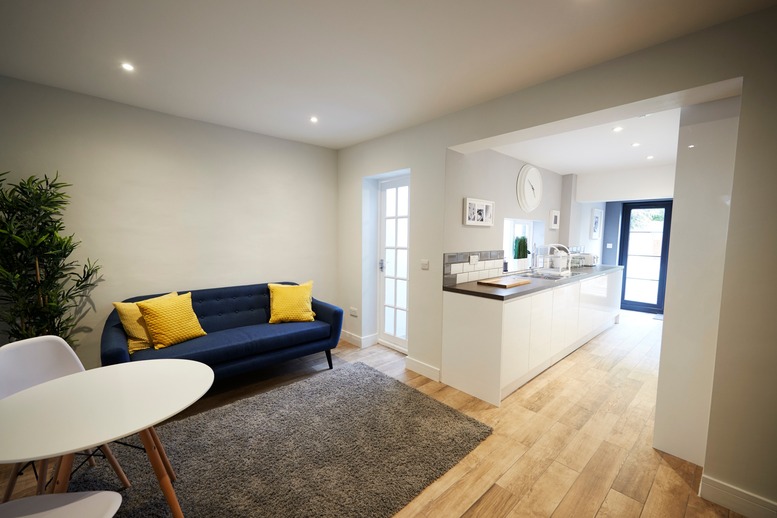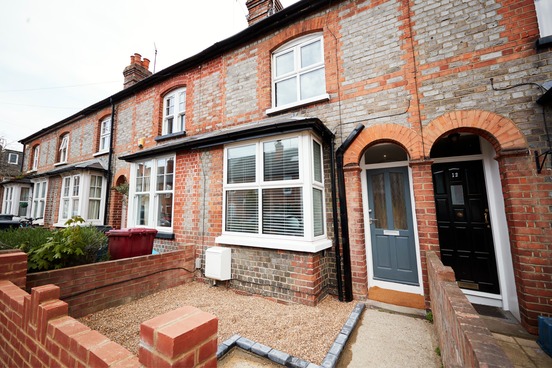
Managing a house in multiple occupation (HMO) can be a challenging and complex job, particularly if you’re just starting out and learning the ropes as an HMO landlord.
HMOs are subject to more rules and regulations than your standard buy-to-let and letting to multiple different people all living under one roof usually creates more administrative work for the landlord.
So, why do so many landlords willingly choose to go down the HMO route?
Because HMO landlords often make more money.
With the right knowledge and approach, managing an HMO is often a more profitable investment than managing a standard buy-to-let. Whilst it may seem complicated to begin with, once you’ve got your head around the additional rules and regulations, running an HMO isn’t actually too different from running your standard buy-to-let, it just requires a little more dedication and hard work.
In this article, we will provide you with top tips, specifically aimed at HMO landlords, that can greatly enhance the success of your HMO buy-to-let investment.
12 Top Tips for HMO Landlords
Whether you already manage several HMOs or you’re just taking your first tentative steps towards becoming an HMO landlord, these 12 tips can help you to maximise your rental income, make your job as a landlord easier, and provide a positive experience for your tenants.
1. Know Your Additional Legal Responsibilities Inside Out
The best thing you can do to make sure that your job as an HMO landlord runs smoothly is to make sure that you understand your additional legal responsibilities inside out from the get-go.
Knowing what is expected from you and what your obligations to your tenants are is essential to the smooth running of your HMO. Failure to comply with HMO regulations could not only land you in trouble with the law, but could also be hazardous to your tenant’s health, safety, and well-being.
The additional responsibilities of an HMO landlord can be roughly divided into five categories:
- Obtaining an HMO licence.
- Providing tenants with adequate provisions.
- Complying with additional fire safety regulations.
- Adhering to overcrowding standards.
- Providing adequate refuse disposal facilities.
To find out more, read our article about landlords’ rights and responsibilities in HMOs.
2. Take Out Specialist HMO Insurance
Houses in multiple occupation are perceived to be higher risk properties and so traditional landlord insurance does not provide adequate cover.
Taking out HMO insurance gives you peace of mind and financial protection in the event of unforeseen circumstances like a fire or flood. It can also protect against liability claims and accidental or malicious damage.
To provide yourself with maximum protection, you should take out comprehensive HMO insurance that covers the following:
- Building insurance.
- Contents insurance (for the contents that you provide).
- Loss of rent (if the building is damaged).
Before taking out HMO insurance, make sure that you have registered the property’s address as an HMO with your local council, forgetting or failing to do this could jeopardise your insurance coverage.
It’s also very important to take precautions to ensure that your tenants do not attempt to sublet any rooms in the property, as this would also render your insurance void.
3. Expect an HMO to be More Work
Managing an HMO is no walk in the park and it’s important to make sure that you’re going into your new venture with your eyes wide open.
Whilst managing an HMO can be very profitable, it can also be a lot of work. Having multiple tenants living under one roof means that the property will require more maintenance and there will be more people asking questions and requiring assistance with resolving issues. HMOs also tend to have a higher tenant turnover rate, so there is more admin work involved.
Many HMO landlords find that managing their property around other employment is very difficult and view their role as an HMO landlord as their full-time job, particularly if they have more than one HMO to look after.
It’s also important to consider what will happen if you are unavailable or away on holiday. If the boiler breaks down or someone locks themselves out of the house, they’ll expect to receive assistance promptly. Most landlords appoint another person to act as their deputy manager in this type of circumstance.
If you haven’t managed an HMO before, consider if you realistically have the time and whether you are prepared to fully commit to the responsibility.
4. Know Your HMO Tenant Types
Having some idea about the type of tenants you envisage living in your property may be more important than you realise.
When decorating, furnishing, advertising, and marketing your property, it is useful to know who it is that you are trying to attract.
Whilst any type of person can indeed live in an HMO, the most common types of HMO tenants are students, young professionals, and seasonal workers.
Students – There is always demand for student accommodation that is located close to campus, amenities, and nightlife. When you rent to students you can expect your property and furnishing to be subject to some pretty heavy wear and tear, but it is usually easy to find tenants and they usually sign for a 12-month tenancy. Location is everything to students and you’d be wise to furnish the property with high-quality, durable furniture that has been bought second-hand at affordable prices.
Young professionals – Young professionals and graduates who are just starting their careers often choose to live in HMOs to make inner-city living more affordable. This type of tenant usually expects more than your average student when it comes to the property’s appearance and furnishings.
Seasonal workers – Seasonal workers are usually foreign or transient workers who require short-term accommodation whilst they are working a temporary job. They may require very short or flexible tenancy agreements and there may be a high turnover of tenants, which can create a lot of admin work. Because seasonal workers don’t usually stick around for that long, they aren’t usually too bothered about high-quality furnishings.
Once you’ve decided what kind of tenant you’d like to attract, it’s best to stick to that type and never mix different types of tenants in the same property. Doing so increases the risk of your tenants’ different lifestyles clashing and causing problems.
5. Tailor Your Property to Attract the Type of Tenant You Want
Once you know what type of tenant you want to work with, take the time to do some research and understand your target market. Think about what their demographics are and what is likely to be most important to them when choosing accommodation. Understanding their needs and preferences will help you to tailor your HMO to their requirements and tastes.
Here are a few ideas for ways that you can tailor your HMO and service to attract the type of tenant you want.
- Choose the right property in the right location.
- Tailor your property’s decor to your target demographic’s taste.
- Offer flexible lease terms.
- Market your property on the platforms your demographic uses.
Tailoring your property and service to the type of tenant that you want to attract can help you to find tenants faster and reduce tenant turnover, as well as providing your tenants with a better service.
6. Convert Extra Living Spaces into Bedrooms to Maximise Profit
One of the best ways that HMO landlords can boost their rental income is by converting extra living spaces into bedrooms. For example, if your property has both a dining room and a living room, plus a kitchen big enough for eating in, then you may be able to convert the dining room into an additional bedroom, significantly increasing your property’s rental income.
There are of course strict rules surrounding overcrowding in HMOs and living spaces should only be converted into bedrooms if there is still adequate space for tenants to live comfortably and the room in question meets the minimum room size requirements for a bedroom.
7. Make Smart Renovations to Your HMO
Another tip for maximising profit is to think about what other smart renovations you can make to the property to make it more appealing to the type of tenant you want living in it.
Sometimes, it is the simplest changes that can make the biggest differences. Aside from converting living spaces into additional bedrooms, other affordable renovations that can improve tenant comfort and make your property more appealing to tenants include:
Smarten up the exterior – What does your HMO’s exterior say about it? Tidying up and taking care of the outside of your property can go a long way in attracting new tenants and showing that you are a landlord that cares about their tenant’s experience. Giving the outside walls a lick of paint, installing a new fence, taking care of the garden, and adding some potted plants and a doormat can seriously boost your HMO’s curb appeal.
Invest in energy efficiency – If your property doesn’t have a very good energy efficiency rating, updating the windows or investing in insulation or draught-proofing can help to make it more energy efficient. At a time when energy prices are sky high, an energy-efficient house with affordable energy bills can be a real bonus for tenants, as can a comfortably warm home.
Add another toilet, washroom, or bathroom – When there are lots of people living under one roof, multiple toilets and washing facilities can be a big selling point. Turning an unused room or space into an en-suite or additional toilet or shower room can really boost the value of your HMO.
8. Opt for Individual Room-only Tenancy Agreements
The tenancy agreement between you and your tenants can either be joint or individual. A joint agreement gives all tenants joint liability for payments and the property, whereas an individual tenancy agreement means that a tenant is solely responsible for their own payments and behaviour.
You also have the option to rent out your property as a whole or as separate rooms. Most HMO landlords find that charging per room helps to maximise their profits.
Another benefit of giving all tenants individual room-only contracts is that it allows you to retain control over the property’s shared common areas, like the living spaces, kitchen, and any shared bathrooms. This means you can easily access these parts of the property to perform maintenance jobs and periodic inspections.
9. Carry Out Regular Property Inspections
It is in all HMO landlord’s best interests to carry out periodic inspections on their property.

Many HMOs have 5 or 6 people all living under one roof, which can make them more susceptible to wear and tear than standard rented accommodation. Carrying out regular inspections helps HMO landlords to ensure that tenants are adhering to the terms of their tenancy agreements, check that the property still complies with safety regulations, and identify any potential hazards and maintenance issues before they become serious problems.
Whilst it is in everyone’s best interest that you inspect the property regularly, it’s important to make sure that you’re not overstepping the mark or making a nuisance of yourself. Include details of how regularly periodic inspections will be carried out in the tenancy agreement and provide tenants with at least 24 hours’ notice of an inspection.
10. Keep Up with Maintenance Work
As an HMO landlord, you will find that it pays to be proactive rather than reactive when it comes to maintenance work. It’s not uncommon for houses in multiple occupation to house 5 or 6 people all under one roof, meaning the property and furnishings within are subject to a high level of wear and tear. You have a legal responsibility to make sure that the property you are renting out is in a safe and comfortable condition and is free from hazards. Keeping up with maintenance tasks plays a key role in this duty.
By carrying out periodic inspections and completing maintenance and repair tasks as soon as they are identified, you reduce the risk of small problems turning into larger and more expensive repair jobs or becoming hazardous to tenant safety.
It can also be frustrating and inconvenient for tenants if things keep going wrong with the property. Keeping up with property maintenance for your HMO can help you to catch issues before they start having a negative impact on your tenants.
Keeping up with your HMO’s maintenance also plays a crucial role in preserving the value of your property.
11. Maintain Good Communication with Your Tenants
The main reason that landlord and tenant relationships break down is because of poor communication, so it’s important to come up with a system that helps you to communicate effectively with your tenants, especially if there are a lot of them!
Make sure that your tenants know that they can contact you if they have any problems and provide them with a few different ways to get in touch. If your tenants do try to call or send you a message, make sure you respond to them as soon as possible.
Equally, make sure you know each of your tenants’ preferred method of contact should you need to communicate important information with them too.
12. Keep Detailed Records for Your HMO Rental
Managing an HMO and complying with all relevant HMO regulations requires a lot of administrative work.
Keeping detailed records and digital evidence of all correspondence, inspections, and property maintenance can help you to stay organised and compliant with HMO regulations.
If landlords have kept good records, they can also use them to demonstrate their compliance with regulatory requirements and prove that they have fulfilled their legal obligations, providing them with protection if any disputes arise.
Using property management software like Landlord Vision can help HMO landlords to keep their records organised and secure.




